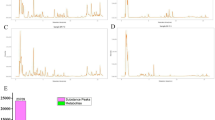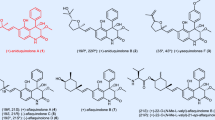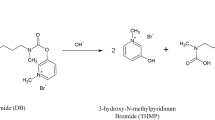Abstract
THREE further references to work on Dichroa febrifuga can be added to those quoted above : they are Tonkin and Work, Nature, 156, 630 (1945) ; Cheng Fang Tsu, J. Trop. Med. and Hyg., 75 (April, 1947) ; and J. B. Koepfli, J. F. Mead and J. A. Brockman, J. Amer. Chem. Soc., 69, 1837 (1947). Dr. Koepfli refers to the earlier work of Dr. Jang and directs attention to the disparity in melting point between his own and Dr. Jang‘s active alkaloid. The new results now presented by Dr. Jang do not resolve this difficulty. Dr. Koepfli suggests, however, that, at any rate in leaf, the biological activity is not accounted for by the active alkaloid which he isolated; thus several related bases may be present. It should also be noted that Dr. Koepfli suggested the active principle was a quinazoline derivative, a conclusion which is now reached by Dr. Jang also.
This is a preview of subscription content, access via your institution
Access options
Subscribe to this journal
Receive 51 print issues and online access
$199.00 per year
only $3.90 per issue
Buy this article
- Purchase on SpringerLink
- Instant access to full article PDF
Prices may be subject to local taxes which are calculated during checkout
Similar content being viewed by others
Author information
Authors and Affiliations
Rights and permissions
About this article
Cite this article
WORK, T. [Letter to Editors]. Nature 161, 401 (1948). https://doi.org/10.1038/161401a0
Issue date:
DOI: https://doi.org/10.1038/161401a0



